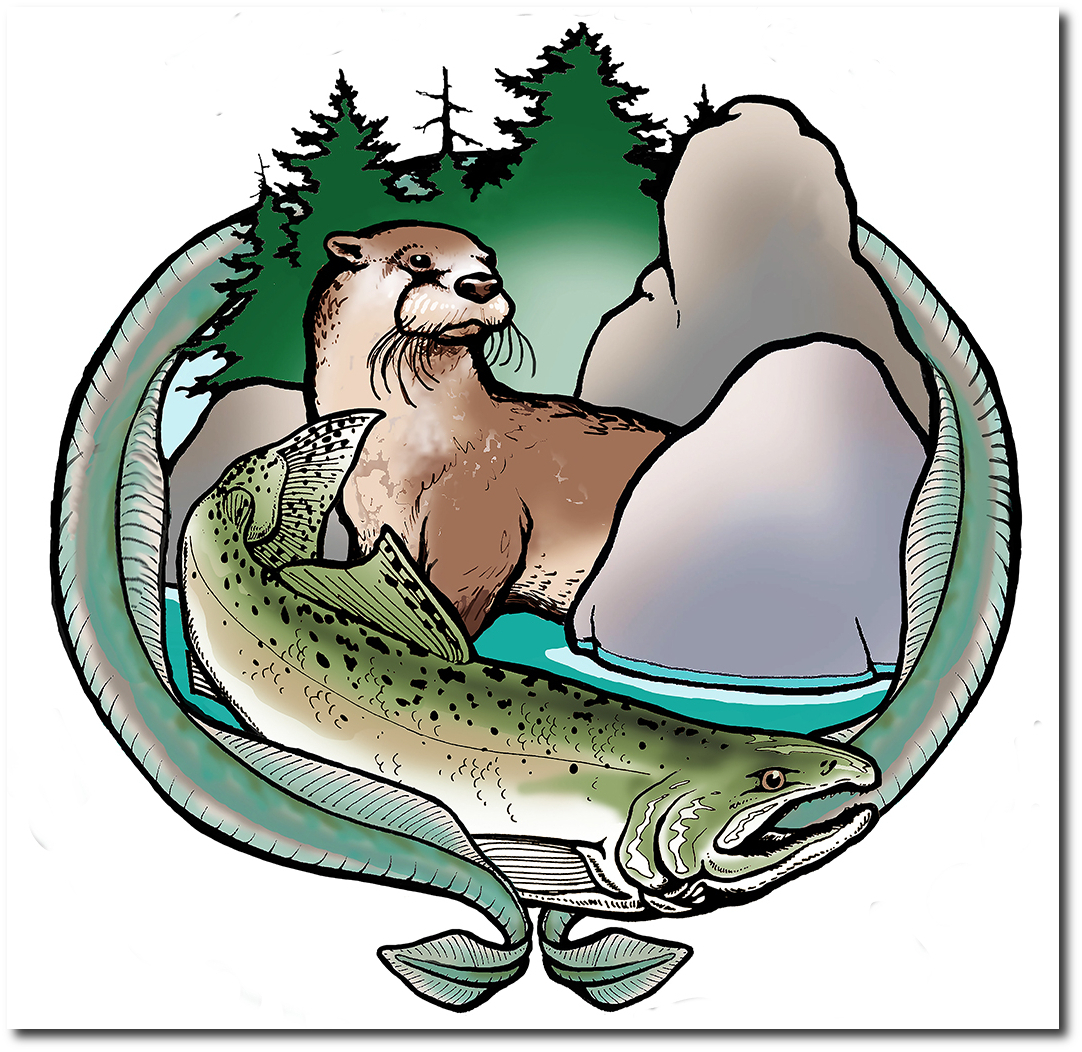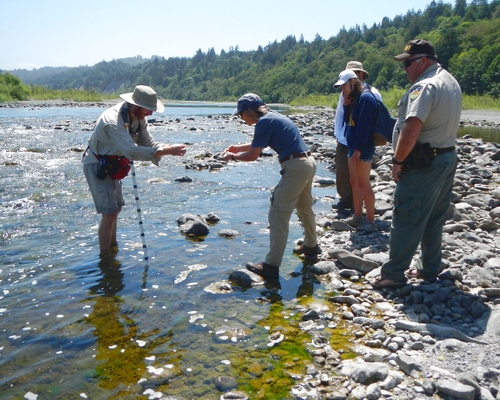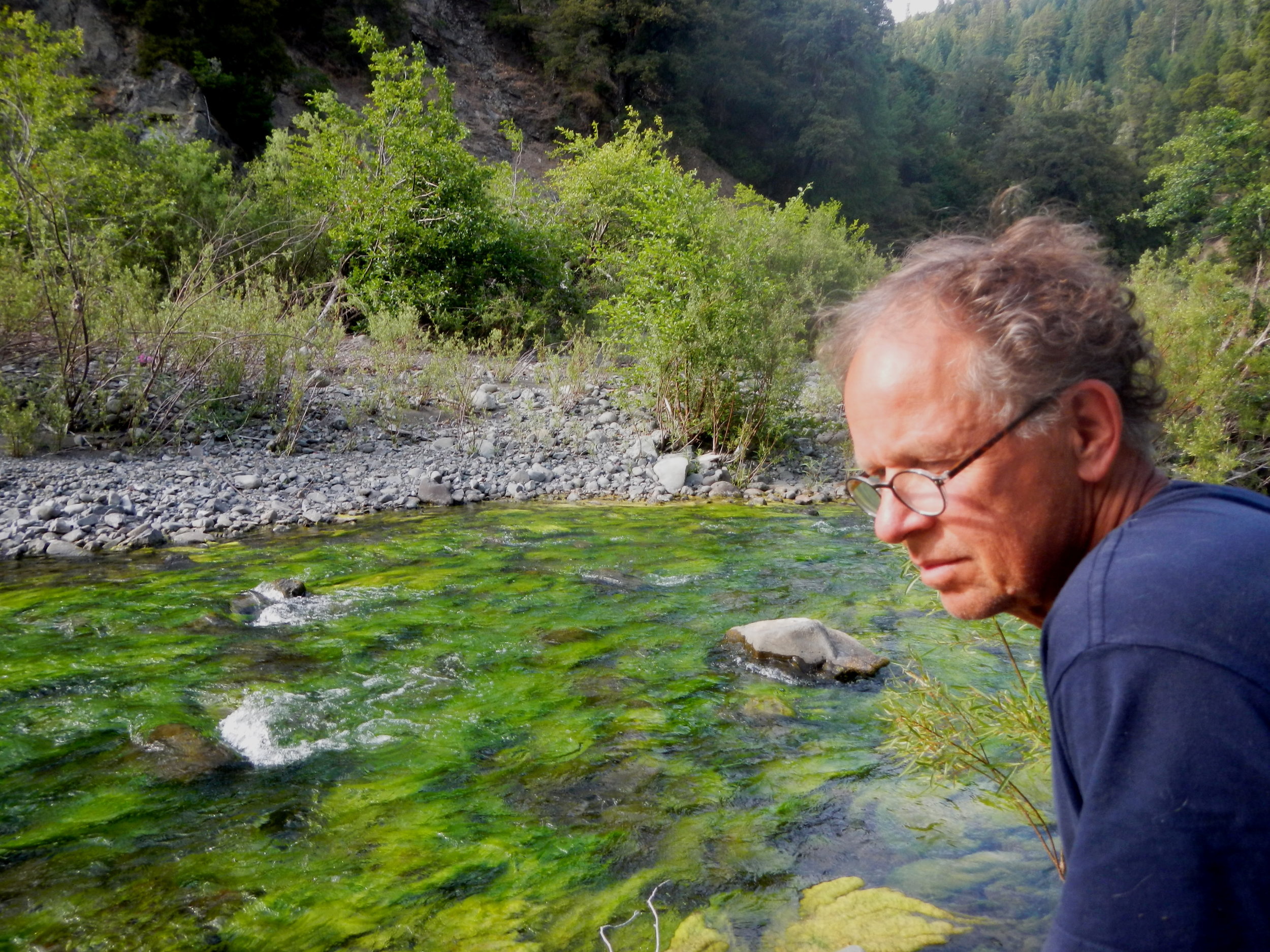Algae / Cyanobacteria
Algae is the base of the Eel River food chain, but it can be a source of pollution, if there are excess nutrients. We have been studying blue-green algae or cyanobacteria since 2013 with the assistance of the University of California Berkeley and Santa Cruz. Citizens of the Eel River were extremely concerned because algal scums began to kill dogs around the year 2000 and people wanted to know if it could be reversed. UCB doctoral candidate Keith Bouma-Gregson helped train volunteers and enabled our cyanotoxin monitoring that was carried out from 2013-2018. Keith has published his dissertation and also several peer-reviewed papers that are linked below. Since 2016, we have worked directly with the Kudela Laboratory at UCSC to provide samplers and to quantify cyanotoxins. A report on 2018 results should be out this spring. The North Coast Regional Water Quality Control Board also monitors cyanotoxins and will be sampling in the Eel River watershed again in 2019.
Reports about Algae
Learn about toxic algae with this factsheet
The 2013 report
Cooperative 2013-2017 Cyanobacteria Analysis
Identify Eel River Algae
Know the Toxic Cyanobacteria
Anabaena is one of the major toxic cyanobacteria species in the Eel River watershed. It often forms in warm edge-waters in dark green spires on beds of dying green algae. As Anabaena creates dissolved oxygen during the day, segments float and are carried downstream and can form deadly scums. Although the lower South Fork Eel River is most prone to Anabaena blooms, they also occurred in other areas in years with low flow.
When Anabaena segments float downstream and form mats, they can be deadly to dogs and hazardous to children. Decaying cyanobacteria cells break open easily and can release toxins when dogs frolic. They ingest a toxic load of neurotoxin Anatoxin-A that causes paralysis in a few minutes after they lick their fur. STAY SAFE - AVOID ALGAL SCUMS!
Another potentially toxic cyanobacteria species inhabiting the Eel River that can tolerate stream current and cold water temperatures is Microcoleus, which until recently was known as Phormidium. Known to occur in nutrient poor reaches as a film on rocks, Microcoleus can become shaggy in the presence of excess nitrogen. The species has a rare ability to fix phosphorous that is often most limiting to plants. Blooms of Microcoleus between Scott Dam and Cape Horn Dam were linked to a canine mortality in 2016.
This cyanobacteria species forms brown, beige or blue-green durable gelatinous balls that grow most often in riffles, but sometimes also in shallow pools. The shape of Nostoc may vary to include ear-shaped and blade forms of growth. UCB sampling within patches of Nostoc found some cyanotoxins, but lesser levels than in Anabaena and Phormidium.
Listen to an interview with biologist and Berkeley professor, Dr. Mary Power. She talks about how reduced flow causes the river to produce more potentially toxic blue-green algae.
Cyanobacteria Documents
The Ecology of Benthic Toxigenic Anabaena and Phormidium (Cyanobacteria) in the Eel River, California. By Keith Bouma-Gregson. U.C. Berkeley doctoral dissertation Department of Integrative Biology.
Rise and fall of toxic benthic freshwater cyanobacteria (Anabaena spp.) in the Eel river: Buoyancy and dispersal. Keith Bouma-Gregson, Mary E. Power, Myriam Bormans.
Microbial diversity and metabolic potential in cyanotoxin producing cyanobacterial mats throughout a river network. Keith Bouma-Gregson, Matthew R. Olm, Alexander J. Probst, Karthik Anantharaman, Mary E. Power, Jillian F. Banfield.
Widespread Anatoxin-a detection in benthic cyanobacterial mats throughout a river system. Keith Bouma-Gregson , Raphael M. Kudela, Mary E. Power.
The Thirsty Eel: Summer and Winter Flow Thresholds that Tilt the Eel River of Northwestern California from Salmon-Supporting to Cyanobacterially-Degraded States. Mary E. Power, Keith Bouma-Gregson, Patrick T. Higgins and Stephanie M. Carlson.















